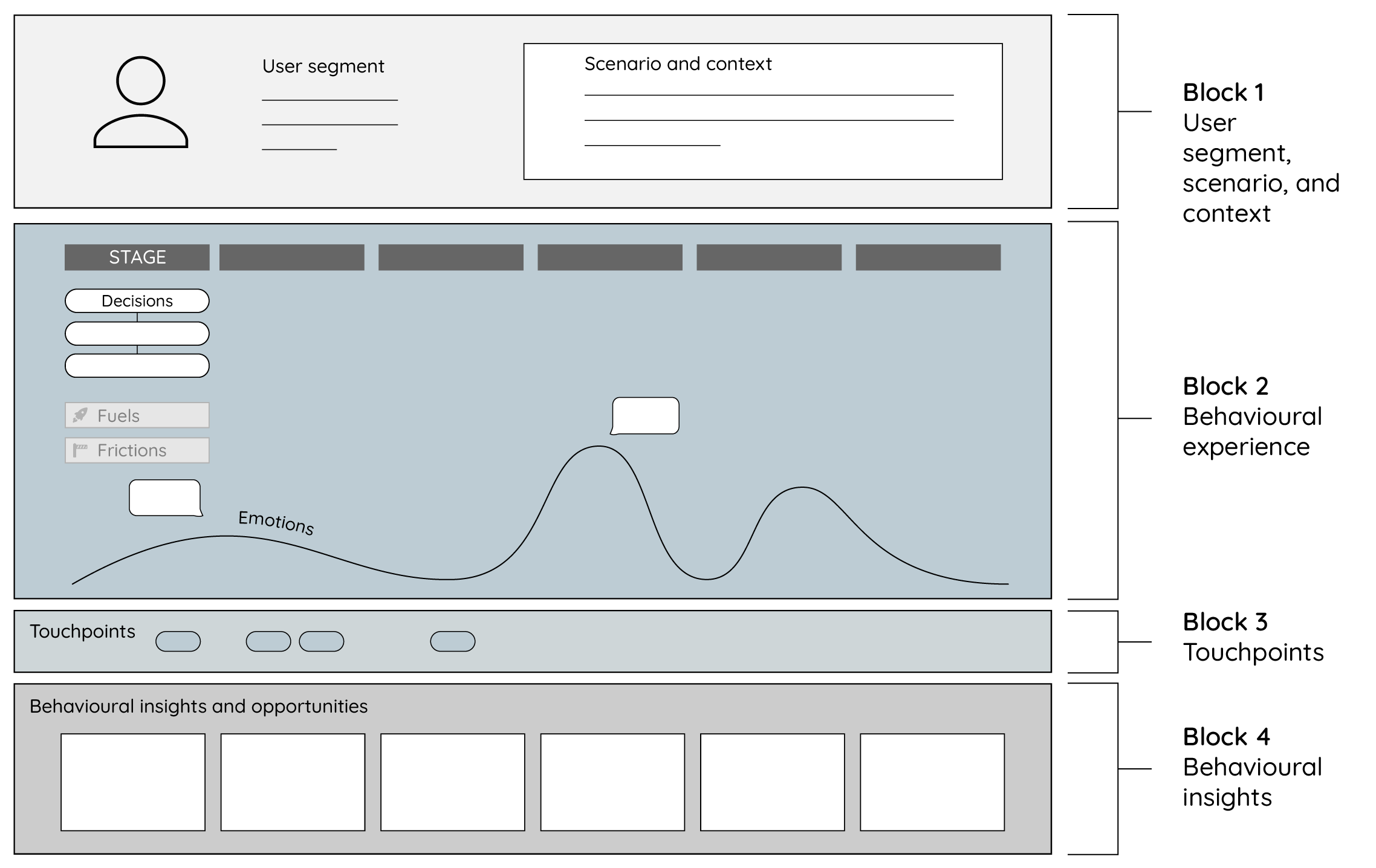4 March 2024
Iranzu Monreal
Share
Behavioural Journey Mapping: Designing Context-Sensitive Interventions
Designing behaviour change interventions is an ongoing learning process that often requires expert practitioners, such as our team at The Behaviouralist, to develop tools that facilitate problem definition and intervention design. This blog post introduces Behavioural Journey Mapping – an important tool that our team often employs.
The process of designing behavioural interventions starts by understanding the determinants and mechanisms of the behaviours under study. For this task, we can draw from behavioural models, such as COM-B and B-MAT. In addition to behavioural frameworks, we can use methods and tools from the field of design. At The Behaviouralist, we have found that design methods are often complementary to those used in behavioural science. We denote the integration of design and behavioural science as behavioural design.
Behavioural design can be used across the development and evaluation process to help create successful behavioural change interventions. Our team has developed and utilised various behavioural design methods, and in this article, we aim to share our experience with one of them: behavioural journey mapping.

Figure 1: Diagram illustrating the overall structure of a behavioural journey map
Behavioural Journey Mapping
In contrast to ‘behavioural mapping’, a method used in architecture and space design to systematically document location-based observations of human activity (Hanington & Martin, 2017), behavioural journey mapping draws from customer journey mapping, a widely adopted method in service and experience design (Rawson et al., 2013; Zomerdijk & Voss, 2010).
Behavioural journey mapping is a research tool used to describe and visualise the relationship between a service provider and a user over time, from the end-user perspective; it is led by a behavioural science framing.
The Behaviouralist recently worked with a large gaming company to create a behavioural journey map for one of their most popular video games. To help explain the concept of behavioural journey mapping, this blog will take a user’s experience of playing video games as an example.
First, we describe the customer segment (e.g., young, highly-frequent player, high-spender), scenario (e.g., a playing session with friends), and high-level journey stages (e.g., before, during and after a playing session).
The next components are the user’s decision-making path and behaviours and, most importantly, the ‘fuels and frictions’ that shape those user behaviours. In the context of a gamer's journey, a player might need to find an appropriate time to play with friends. If their friends are too busy to play that day, this might be a deterrent, even if they are highly motivated to play that day.
In order to understand and define the journey stages and components, as in the example above, we need to conduct a series of research activities. These can vary depending on the time and resources available but might include a literature review, surveys, in-depth interviews or focus groups. These outputs will help us create a narrative that will be condensed and refined, ultimately leading to a graphic representation of the steps involved in a particular behaviour or activity.
In this way, a behavioural journey map summarises user research outputs and represents the unfolding of the user decision-making path from end-to-end from a holistic but granular view. This exercise allows behavioural scientists and other professionals to understand the system in which the target behaviours occur.
Furthermore, the map facilitates the identification of barriers, which can be organised by levels (e.g., system-level barriers, individual-level barriers) or by type (e.g., attitudinal barriers, structural barriers), and also includes the promoters or facilitators of the target behaviours (e.g., the player is more motivated when their friends are also playing, therefore, playing with friends might be a promoter of the target behaviour).
In summary, a behavioural journey map typically includes the following components:
- User segment: determines the map’s point of view in order to build a robust and clear narrative.
- Scenario and context.
- Journey stages.
- User’s decision-making path.
- Fuels and frictions: These are the factors that influence users’ behaviours. These may include users’ perceptions or beliefs as well as social and environmental influential factors.
- Emotional status at each stage of the experience.
- Touchpoints: any point of contact or interaction between service providers and users (e.g., email notifications).
- Behavioural insights and opportunities for behavioural change.
This mapping process allows us to identify opportunities for behaviour change while ensuring that interventions are tailored to the specific target population, in addition to being grounded in theory and evidence-based. The map also allows for the identification of contextual and multi-level factors, which is particularly helpful given that behavioural science is often criticised for placing too much emphasis on individual-level factors, potentially disregarding important social and structural influences on behaviour change.
In addition, the map can also be used to share knowledge as it is an effective mechanism for conveying information in a relatively simple and clear way. It also helps build a shared vision of the service from the user’s standpoint.
If you found this article interesting, and would like to explore how behavioural design can help your organisation, please don't hesitate to contact us!

